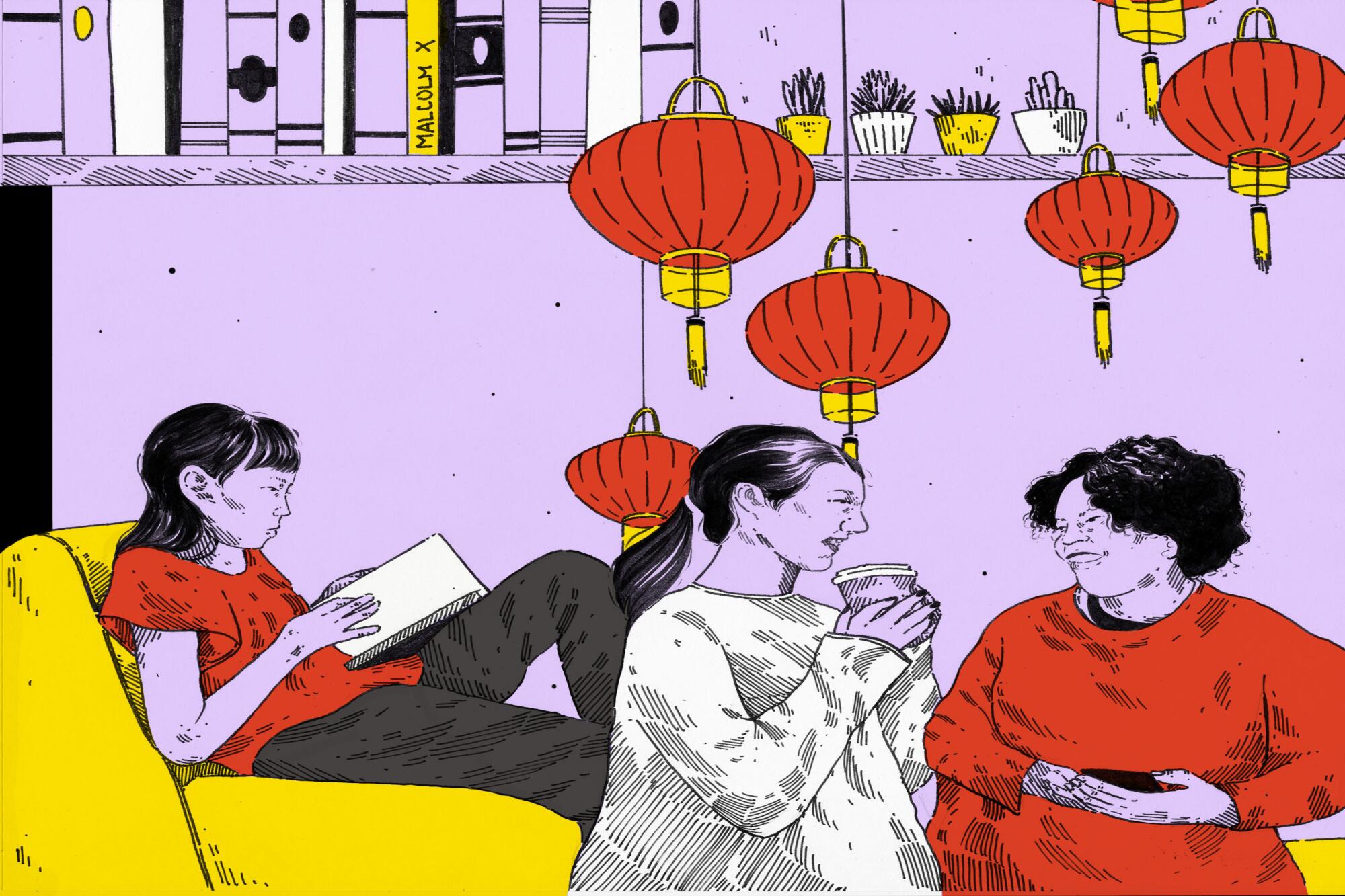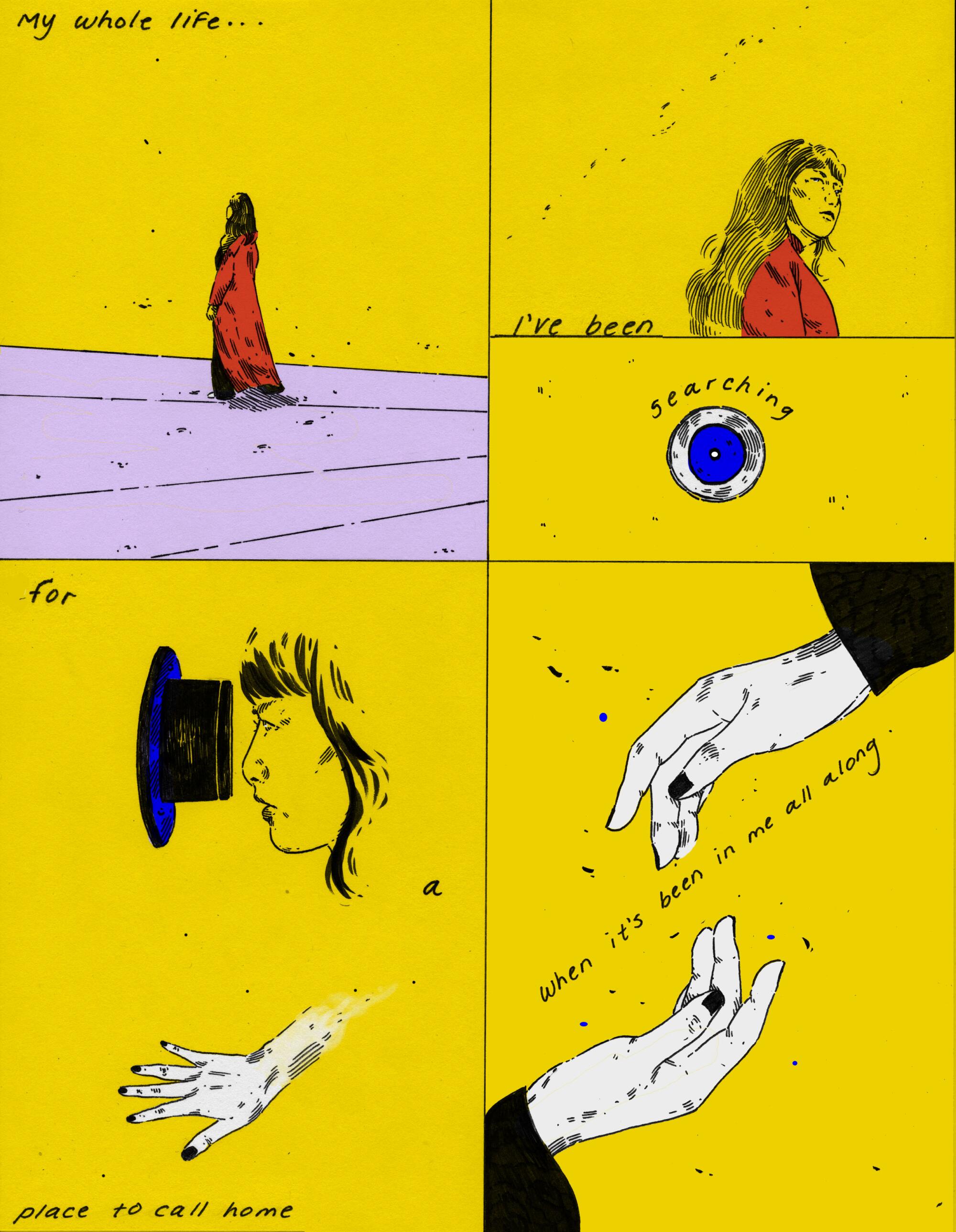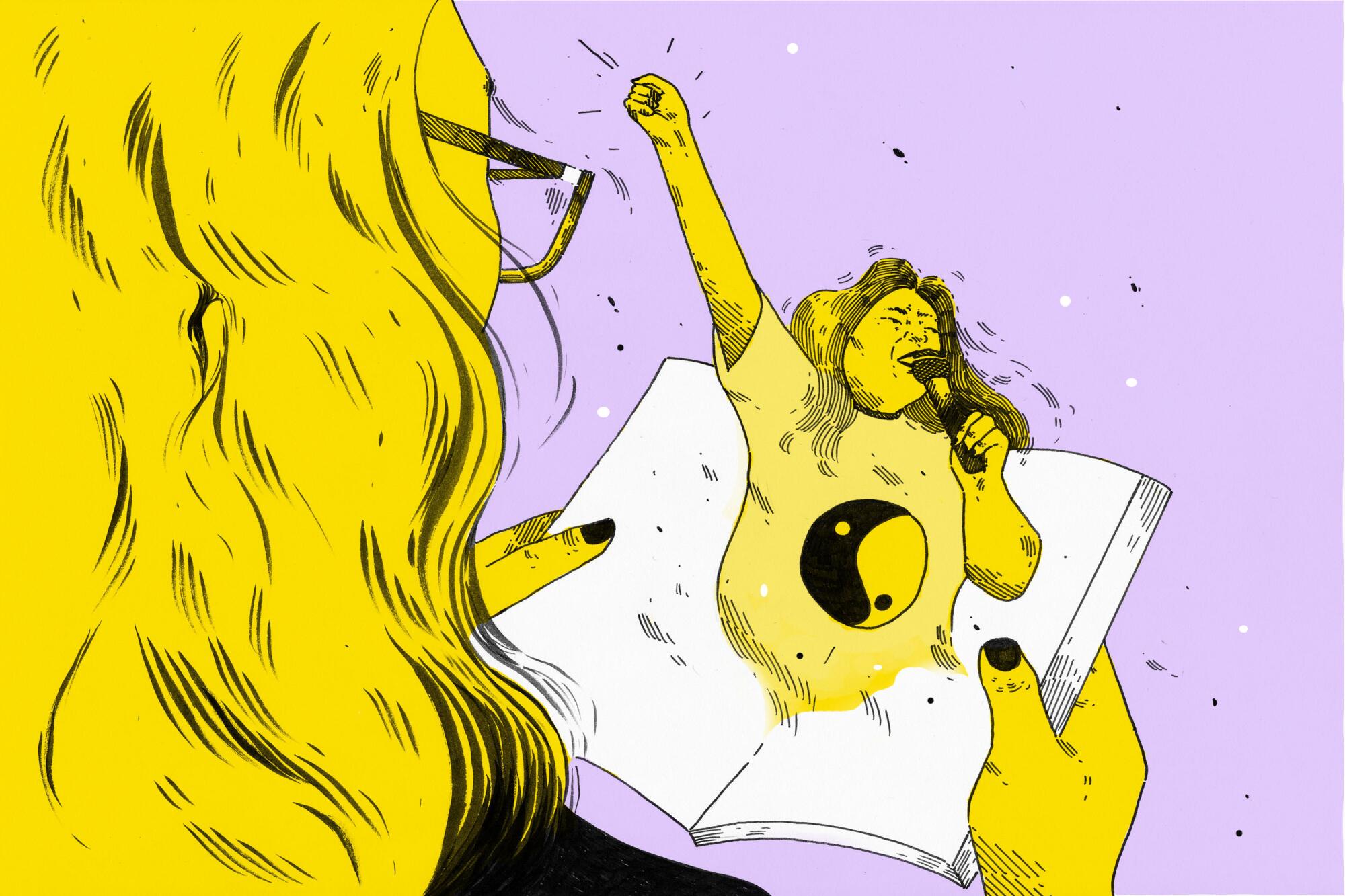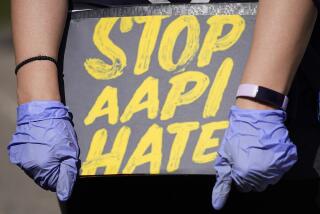
Black and Asian communities in America are often portrayed as in conflict with each other — but that ignores the moments of solidarity, resistance and collective power. (Illustration by Diana Nguyễn / For The Times)
- Share via
It’s been more than a year since the George Floyd protests — and about four months since Asian Americans, inspired by the Black Lives Matter movement, took to the streets after the deadly Atlanta spa shootings to speak out against escalating anti-Asian hate incidents.
These high-profile murders during the COVID-19 pandemic sparked national conversations about racism against the Black and Asian American communities, two communities that have historically been pitted against each other. As a result, there were inspiring moments of solidarity and cross-cultural movement building.
There were also more widespread efforts to learn more — and teach each other — about the history of communities of color in America, whether through celebrity PSAs reminding us that anti-Asian violence is not new, youth-led virtual anti-racism book clubs or speeches reminding Asian Americans of their history of resistance and power.
But in July, the prosecutors handling four of the eight murder charges against the Atlanta shooter determined that, though he killed six Asian women, he was motivated by sex addiction and that it was not a hate crime. He pleaded guilty to those four murder charges and faces four more, including hate crime enhancements, in another county. A couple days later, the FBI determined that the gunman who killed eight people in April at an Indianapolis FedEx warehouse that Sikh leaders said was known for hiring a Punjabi-Sikh majority was also not motivated by hate or bias.
So where are we now? And are solidarity efforts leading to concrete changes?
It’s complicated. President Biden signed a law that designates a point person at the Justice Department to review potential hate crimes, which many regarded as a political win for the Asian American community and a rare moment of bipartisanship in Washington. At the same time, more than 85 Asian American and LGBTQ groups opposed it, arguing that its focus on more policing and punishment disproportionately harms Black and brown communities.
What’s clear is that the work of solidarity takes time, is difficult and isn’t always straightforward. And that more Asian Americans are thinking deeply about how they fit into the larger American narrative around race.
To continue the conversation, The Times is looking at these issues from several perspectives: First, we hear from a 13-year-old Asian American girl who organized a solidarity rally in Oakland. Then we listen in on a conversation between two Los Angeles-based academics and activists about what Black and Asian solidarity means to them. And lastly, two racial justice advocates explain how to move beyond allyship and toward solidarity.
Asian American youth stand up
Thirteen-year-old Ashlyn So organized an Asian and Black solidarity rally in Oakland, after viral videos perpetuated a stereotype of Black men targeting Asian people. Writer and historian Jeff Chang reflects on what it was like to be a young Asian American in L.A. in the ‘90s after the uprisings, when the media pitted Black and Asian communities against each other. Read the story.
‘History is dangerous. So if it’s dangerous, I want to be there’

Black Lives Matter L.A.’s Melina Abdullah grew up in a community that was Black and Chinese. “Asian Americans” documentarian Renee Tajima-Peña read Malcolm X at age 10 after a teacher denied her family’s history in the World War II-era internment camps. In a candid conversation about what Asian and Black solidarity means to them, the two realize they are kindred spirits who are always ready to fight. Read the story.
What is solidarity?
Building Movement Project’s Deepa Iyer says solidarity is a “daily lifelong practice,” not something you do when there is a high-profile case of police violence or a hate crime. Anti-racist consultant Kim Tran explains how solidarity is different from allyship; it requires big social risk — and “swinging for the fences.” Read the story.
An artist’s view
Artist Diana Nguyễn, who illustrated this series and whose other work can be found @diananguyenart on Instagram, interprets what cross-racial solidarity means to her.

More to Read
About these stories
Sign up for The Wild
We’ll help you find the best places to hike, bike and run, as well as the perfect silent spots for meditation and yoga.
You may occasionally receive promotional content from the Los Angeles Times.














